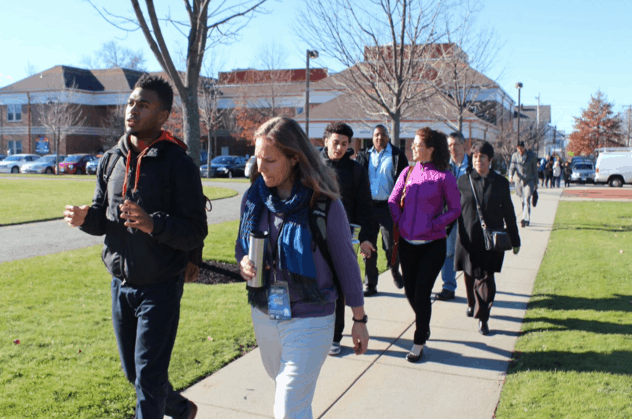Meeting the 10 Expectations Students Have of School

Chris Jackson
Last August, NPR covered a story about a student—17 year old Nick Bane—who found himself bored at his fairly prestigious, Denver-based independent school—Colorado Academy. Having seen Sugata Mitra’s famous TED talk, Bane convinced his school administrators and his parents that he should be able to build his own curriculum as well as travel outside of the school to learn from local experts in the field of his interests.
In my days as Director of the College & Work Readiness Assessment (CWRA), I had the great pleasure of working closely with Colorado Academy, so I’m not surprised by the flexibility they’ve shown to meet students at their own best place of learning. Head of School Mike Davis is a thoughtful and innovative leader, and he also has the luxury of not being burdened by state assessment and curriculum mandates, and his school—like many other independent schools—is a resource-rich environment. This is not a judgment, just an observation. Which leads to this question:
Why can’t all schools meet students at the center of their own learning?
There are many answers to this question, but one that comes to mind is that schools simply self-impose pressures on themselves that keep them from finding the flexibility within whatever structure (either literal or figurative) that confines them.
For instance, one very specific self-imposed barrier is an insistence that schools themselves set the expectations for learning, which students must adhere to. Desks must be positioned a certain way. Classrooms must last a certain time period. The level of volume in the room must always hover around a certain (quiet) decibel. And, above all, teaching must occur at school.
But while we often hear of the expectations that schools have of students, we rarely get a chance to hear about the expectations that students have of schools. These get less attention, but are essential to keeping students engaged and in school.
At Big Picture Learning, we have been working steadfastly for over 20 years designing and assisting schools who are interested in finding ways to put students at the center of their own learning. And you can’t do that without first asking hard questions like: ”
- Do I know about my students’ individual interests and talents?
- Do I help my students understand how learning contributes to our community and the world?
- Can my students learn things in an order that fits their own learning style(s)?
- Do my students have opportunities to tinker and make guesses?
- Do my students have real choices about what, when and how to learn and demonstrate their abilities?
So we’ve developed a set of tools for educators which lay the path toward a more student-centered approach to learning, a path that—remarkably—is open to both resource-rich and underserved communities. Through the 10 Expectations portal, we’ve made available (for free!) videos, rubrics and interactive surveys (in partnership with Zaption) that can help students, parents and educators determine whether their school is truly an engaging learning environment, one which asks the essential question:
“Have we considered students’ own expectations of us?”
Rubrics and assessments like these, which are designed not to measure students’ mastery of content but rather something a bit less tangible, are not particularly new. Tools like the Gallup Student Poll, the Hope Survey, the Mission Skills Assessment, and the aforementioned CWRA have all been designed and implemented as ways of stressing that there are things in school more important than content mastery.

We introduce the 10 Expectations Survey into this bowl of potpourri as a way of stressing that we can all be better. We can all find ways to help the Nick Bane’s and Paul Alves’ of this world find learning environments that take their expectations and their interests to heart. We can engage our students in the types of learning, both inside and outside of school, that increase their motivation and—frankly—happiness.
Elliot Washor, co-founder (with Dennis Littky) of Big Picture Learning and co-author (with Charles Mojkowski) of Leaving to Learn, will be hosting a free webinar on Thursday, February 4, from 2-3PM ET on “Meeting Students Expectations for School.”
For more, see:
- 4 Ways Big Picture Learning Prepares Leaders for Deeper Learning
- Living Your Future is an Authentic Process
- Big Picture Learning Pilots Dual Enrollment with College for America
Chris Jackson is Chief Communications Officer at Big Picture Learning. Follow Chris on Twitter, @CJacksonj13.
Stay in-the-know with all things EdTech and innovations in learning by signing up to receive the weekly Smart Update.







Viv White
Dear friends in our international network
Our students expectations of us are indeed high, and totally reasonable.
Students and the community in Australia too like all of our international network of students agree that we can together achieve these. Congratulation BPL another great resource for us all. Viv